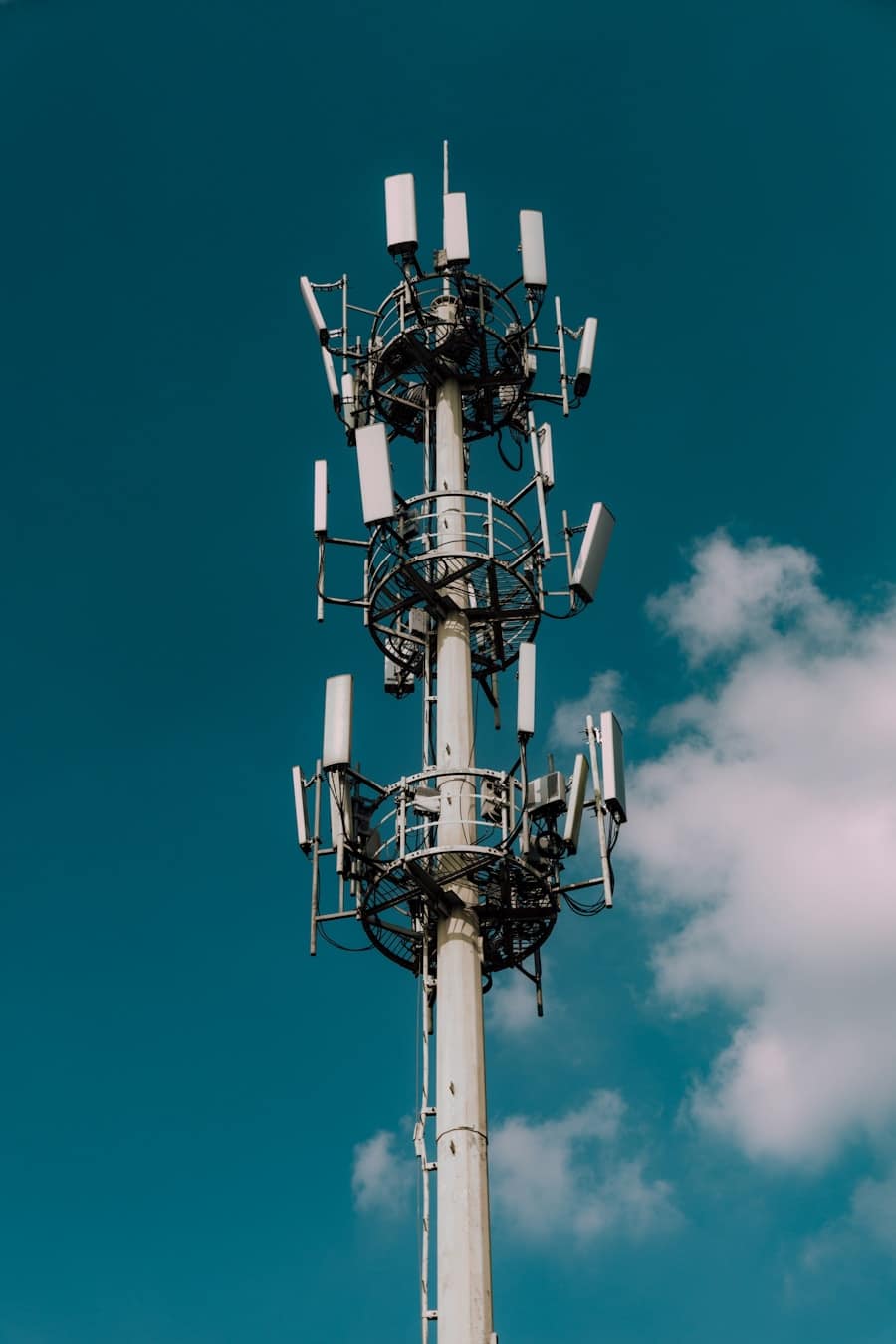The advent of 5G technology marks a significant leap forward in telecommunications, promising to revolutionize how we connect and communicate. Unlike its predecessors, 5G is designed to deliver ultra-fast data speeds, reduced latency, and the ability to connect a vast number of devices simultaneously. This next-generation network operates on a higher frequency spectrum, which allows for greater bandwidth and improved performance in densely populated areas.
The implications of 5G extend far beyond mere enhancements in mobile phone capabilities; they encompass a wide array of applications across various sectors, including healthcare, transportation, and notably, public safety. As cities evolve into smart environments, the integration of 5G technology becomes increasingly critical. The ability to transmit large volumes of data in real-time enables a more interconnected ecosystem where devices communicate seamlessly.
This connectivity is essential for public safety systems, which rely on timely information exchange to respond effectively to emergencies. With the potential to support millions of devices per square kilometer, 5G lays the groundwork for innovative solutions that can enhance the efficiency and effectiveness of public safety operations.
Key Takeaways
- 5G technology is the next generation of wireless communication, promising faster speeds and lower latency.
- Connected public safety systems are crucial for efficient emergency response and disaster management.
- 5G enhances public safety communication by enabling real-time data transmission and video streaming.
- 5G’s impact on real-time data and video transmission allows for quicker and more accurate decision-making in emergency situations.
- 5G plays a vital role in improving emergency response times by enabling faster and more reliable communication between first responders and emergency services.
The Importance of Connected Public Safety Systems
Connected public safety systems are vital for ensuring the well-being of communities. These systems encompass a range of technologies and protocols designed to facilitate communication among first responders, emergency services, and the public. In an era where threats can emerge suddenly and unpredictably, having a robust network that allows for rapid information sharing is paramount.
Connected systems enable real-time situational awareness, which is crucial for making informed decisions during emergencies. Moreover, the integration of connected systems fosters collaboration among various agencies. For instance, police departments, fire services, and medical responders can share critical data and coordinate their efforts more effectively when they are connected through a unified platform.
This interconnectedness not only streamlines operations but also enhances the overall response to incidents, ultimately saving lives and minimizing property damage. As urban areas continue to grow and evolve, the need for sophisticated public safety systems that leverage technology becomes increasingly apparent.
How 5G Enhances Public Safety Communication
5G technology significantly enhances public safety communication by providing a reliable and high-speed network that supports various forms of data transmission. Traditional communication methods often suffer from limitations such as bandwidth constraints and latency issues, which can hinder effective communication during emergencies. In contrast, 5G’s low latency—often as low as one millisecond—ensures that information is transmitted almost instantaneously.
This rapid communication is crucial when every second counts in emergency situations. Additionally, 5G enables the use of advanced communication tools such as video conferencing and real-time data sharing among first responders. For example, during a natural disaster or a large-scale event, emergency personnel can utilize high-definition video feeds to assess situations remotely and make informed decisions based on real-time visuals.
This capability not only improves situational awareness but also allows for better resource allocation and coordination among different agencies involved in the response effort.
5G’s Impact on Real-time Data and Video Transmission
The impact of 5G on real-time data and video transmission is profound, particularly in the context of public safety. With its enhanced bandwidth capabilities, 5G allows for the seamless transmission of high-definition video feeds from various sources, including drones, body cameras worn by officers, and surveillance systems. This influx of real-time visual data can be invaluable during critical incidents such as active shooter situations or large-scale emergencies where situational awareness is paramount.
For instance, consider a scenario where law enforcement is responding to an active shooter situation in a crowded venue. With 5G technology, officers can receive live video feeds from drones deployed overhead or from body cameras worn by colleagues on the ground. This real-time information enables command centers to assess the situation more accurately and make strategic decisions based on current conditions rather than relying solely on fragmented reports from officers in the field.
The ability to visualize events as they unfold can significantly enhance tactical responses and improve overall public safety outcomes.
The Role of 5G in Improving Emergency Response Times
One of the most critical aspects of public safety is the speed at which emergency services can respond to incidents. Delays in response times can have dire consequences, making it essential for first responders to have access to the most efficient communication tools available. 5G technology plays a pivotal role in improving these response times by facilitating faster data exchange and enabling more effective coordination among various agencies.
For example, when a 911 call is made, the information can be transmitted instantly to dispatchers who can then relay it to the nearest available units without delay. Furthermore, with 5G’s ability to support location-based services with high accuracy, emergency responders can be directed to the scene more efficiently. This capability is particularly beneficial in urban environments where navigating through traffic can be challenging.
By leveraging real-time traffic data and optimizing routes based on current conditions, emergency services can arrive at their destinations more quickly, ultimately saving lives.
Leveraging 5G for IoT Devices in Public Safety
The Internet of Things (IoT) has emerged as a transformative force across various sectors, and its integration with 5G technology presents unique opportunities for enhancing public safety systems. IoT devices—ranging from smart sensors to connected cameras—can collect and transmit data that is crucial for monitoring public spaces and responding to emergencies. With 5G’s high-speed connectivity, these devices can operate more effectively, providing real-time insights that inform decision-making processes.
For instance, smart sensors placed in public areas can detect unusual activity or environmental changes that may indicate potential threats.
Additionally, connected surveillance cameras equipped with advanced analytics can identify suspicious behavior or recognize faces in crowded environments.
The combination of IoT devices and 5G technology creates a comprehensive surveillance system that enhances situational awareness and improves overall community safety.
Addressing Security and Privacy Concerns with 5G in Public Safety
While the benefits of 5G technology in public safety are substantial, it also raises important security and privacy concerns that must be addressed proactively. The increased connectivity and reliance on digital systems create potential vulnerabilities that could be exploited by malicious actors. Ensuring the integrity of communication channels is paramount; therefore, robust cybersecurity measures must be implemented to protect sensitive data transmitted over 5G networks.
Moreover, privacy concerns arise from the extensive use of surveillance technologies enabled by 5G connectivity. The deployment of IoT devices and connected cameras raises questions about how data is collected, stored, and used by public safety agencies. It is essential for policymakers to establish clear guidelines that govern data usage while balancing the need for security with individual privacy rights.
Transparency in how data is handled and providing citizens with information about surveillance practices can help build trust between communities and law enforcement agencies.
Future Possibilities for 5G in Public Safety Systems
The future possibilities for 5G technology in public safety systems are vast and exciting. As cities continue to evolve into smart environments, the integration of advanced technologies will become increasingly sophisticated. One potential development is the use of artificial intelligence (AI) in conjunction with 5G networks to analyze vast amounts of data collected from various sources in real time.
AI algorithms could identify patterns or anomalies that may indicate emerging threats or help optimize resource allocation during emergencies.
For example, self-driving ambulances could communicate with traffic signals to ensure they receive priority access during emergencies, further reducing response times.
The synergy between 5G technology and emerging innovations will undoubtedly lead to more efficient public safety operations and improved community resilience against various threats. In conclusion, while this article does not summarize or conclude its sections explicitly, it highlights the transformative potential of 5G technology within public safety systems. The integration of this advanced telecommunications infrastructure promises to enhance communication capabilities, improve response times, leverage IoT devices effectively, address security concerns proactively, and pave the way for future innovations that will redefine how communities ensure their safety and security.
In a recent article on enicomp.com, the importance of smartwatches in enhancing public safety systems was discussed. Smartwatches, such as those reviewed in another article on enicomp.com, can play a crucial role in providing real-time data and communication capabilities to first responders. When combined with the power of 5G technology, as explored in the article on The Role of 5G in Powering Connected Public Safety Systems, these devices can greatly improve emergency response times and overall effectiveness in critical situations.
FAQs
What is 5G?
5G is the fifth generation of wireless technology, designed to provide faster and more reliable communication networks compared to previous generations.
How does 5G benefit public safety systems?
5G enables public safety systems to have faster and more reliable communication, allowing for real-time data transmission, improved response times, and enhanced situational awareness.
What are some examples of how 5G can power connected public safety systems?
5G can support connected devices such as body cameras, drones, and sensors, enabling seamless data sharing and communication among first responders and emergency services.
How does 5G improve emergency response times?
With its low latency and high bandwidth, 5G allows for quicker transmission of critical information, enabling faster response times and better coordination among emergency responders.
What are the potential challenges of implementing 5G in public safety systems?
Challenges may include the need for infrastructure upgrades, cybersecurity concerns, and ensuring equitable access to 5G technology for all communities.



